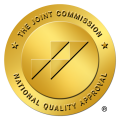Opioid Challenges in the Hispanic Community
The Hispanic opioid crisis has unique concerns for prevention and recovery. Here’s what you should know about culturally competent care for the Hispanic community.
Rates of Substance Abuse in the Hispanic Community
With a growing population of over 60.6 million, the Hispanic community is the largest minority population in the United States. As the misuse of opioids continues to affect people of all backgrounds, the Hispanic opioid crisis has put many in the community at risk for misuse and addiction.1
While the Hispanic opioid crisis puts those in the Hispanic community at increased risk for misuse, cultural issues also make getting help more challenging. Health care providers can sometimes fail to understand how Latino culture a critical part of care for Hispanic opioid disorders can be. Finding the right help with a recovery center and counselors that understand these obstacles and provide culturally competent care is crucial for recovery.
Statistics on Addiction in Hispanic Communities
Hispanic opioid disorders are on the rise, especially among the youth. While the older population is much less likely to use opioids, younger generations in the Latino community face growing opioid use above the average population.
While Hispanic Americans have a lower lifetime rate of illicit drug use (37.7%) compared with White (54.5%) and Black (45.9%) communities, they have the same rate of drug use disorder as the total population.2
However, research into the rates of opioid use among Hispanic youth found that they had the highest prevalence of both illicit drug use and prescription opioid misuse compared to the general high school population.3
With the rise of Hispanic opioid disorders, it is critical to provide early intervention to keep these numbers from rising in the future.
Drugs Commonly Abused in Latino Communities
According to the CDC National Vital Statistics System, some of the most abused drugs among the Latino community include:4
- Heroin
- Prescription opioids, such as Vicodin and OxyContin
- Synthetic opioids, such as fentanyl
- Natural opioids, like morphine and codeine
Opioids include drugs that doctors prescribe to help manage pain. However, if they are not carefully used as directed, misuse can lead to opioid use disorder, addiction, and even Hispanic opioid overdose deaths. Prescription use of opioids has led to an alarming rise in addiction to both prescriptions and illegal drugs. This factor is true within the Latino community with the increase of Hispanic opioid disorders.
Rising Latino deaths
Much like the rest of the population, Latinos are continuing to experience rising fatalities in the Hispanic opioid crisis. Hispanic opioid overdose deaths increased 170% from 2014 to 2017, with deaths from synthetic opioids rising a staggering 617%.4
The concerning rise in Hispanic opioid overdose deaths points to the need to create care specifically targeted to the needs and challenges within the Latino community.
The Opioid Crisis in the United Statesy
Signs and Symptoms of Opioid Addiction

One of the critical first steps in recovery is realizing and recognizing the signs of a use disorder. Identifying these symptoms in yourself and others makes it possible to get help as quickly as possible.
The CDC defines opioid addiction as a chronic disease. It affects both the brain and the body, so addiction is mental, physical, and behavioral signs.
Some of the common signs of opioid addiction include:- Inability to stop or limit opioid use even when wanting to
- Needing more significant amounts of opioids to get high and developing a tolerance
- Strong and uncontrollable cravings
- Making mistakes at school or work because of opioids
- Damaging relationships with loved ones because of opioid use
- New financial difficulties
- Decrease in libido
- Legal issues
- Mood issues, including depression, mood swings, and anxiety attacks
- Poor decision making
- Lack of hygiene
- Changes in sleep habits
- Stealing from loved ones or businesses to pay for addiction
- Lack of motivation
- Potential physical symptoms of opioid addiction include:
- Loss or lack of coordination
- Slurred speech
- Oversleeping or drowsiness
- Sweating
- Nausea or vomiting
- Shaking
- Constipation
- Weight loss
- Frequent flu-like symptom
What Causes Substance Use Disorders?
Several behavioral, environmental, and genetic factors make substance abuse more likely. Some of the most significant risk factors for addiction include:- Regular tobacco use
- Stressful home life
- History of mental health disorders, including depression and anxiety
- Family history of substance abuse or addiction
- Risk-taking and thrill-seeking
- Unemployment
- Poverty
- Previous drug use
The Impact of Opioid Abuse for the Hispanic Community
Recovery Obstacles for Spanish Language Patients
Hispanic opioid disorders should have a road to recovery that takes their culture into account. The Latino community faces different challenges that require understanding and help from professionals that understand Hispanic culture. Some of the most common obstacles that they may face when treating Hispanic opioid use include:
Language Barrier
One of Latinos’ most common issues when seeking help is finding providers that speak their language. The lack of Spanish-speaking professionals, as well as health-related materials in their language, can interfere with accessing treatment for a sensitive topic such as opioid addiction.
Health care facilities that receive federal assistance are required by law to provide free interpreters for those who have limited English proficiency. However, this provision is not always the case, and, in many circumstances, Hispanic youth serve as interpreters. A lack of professional interpretation can make some individuals reluctant to talk about opioid misuse because of the stigma that it carries.
Financial Issues
Financial issues make individuals more at risk for developing an opioid disorder and can provide a challenge to seeking treatment. In-patient facilities are often more expensive and keep patients from being able to work. Additionally, it limits their access to other more costly forms of treatment, such as medication-assisted treatment.
Hispanics are more liable to economic insecurity. The lack of financial resources can make the prevention and treatment of Hispanic opioid use more difficult.
Limited Access to Treatment
Language barriers, financial challenges, and cultural issues leave Hispanics with less access to treatment options than White communities. Research shows that they are less likely to use medical-assisted treatments (or MAT), such as methadone or naltrexone. A study of over 28,000 people in treatment found that Hispanics rely more on detoxification only compared to white individuals.5
Many Hispanics face a lack of access to providers who speak Spanish and are culturally competent to work with Hispanic populations. A one-size-fits-all approach to care is not appropriate to the needs of the Latino community, and facilities should treat Hispanic opioid use with culture in mind.
Resistance to Trust Outsiders
As a part of the tight-knit community, trauma resulting from immigration and fear of deportation, many in the Hispanic community distrust outsiders, especially those in authority. As a result, preventing and treating the Hispanic opioid crisis requires input and active involvement within the Hispanic community rather than leaning on those outside of their culture.
Sociocultural Factors Associated With Accessing Services
Beyond unique challenges, Hispanic culture also has other factors that need to be considered for opioid misuse prevention and treatment:
Family
In the Hispanic culture, familismo is a term that refers to the critical role that family plays in their everyday life. It stresses the importance of family social networks and distributing resources through these networks. It is a key concept to understand for preventing, treating, and enabling recovery for Hispanic opioid disorders.
The involvement of family members and the inclusion of family in recovery is a critical approach throughout treatment, from engagement to continuing care. Hispanic opioid disorders are most successful when the concept of familismo is utilized throughout prevention, treatment, and recovery.
Spirituality and Religion
Religion is especially esteemed in Hispanic culture. Over 82% of those in the Hispanic community identify with a religion.6 Because religion plays such an essential part in Hispanic culture, it should be recognized and considered when creating effective engagement for the prevention, treatment, and recovery from opioid misuse.Immigration Issues
The rise in instability in many Latin American countries has brought an increase in migration in the past few decades. Immigration and acculturation both impact mental health, and the trauma of these experiences increase the risk of addiction, especially when fleeing persecution. Fears of deportation can also cause mental health issues, as well as fear of seeking help.
Immigration and acculturation must be considered and recognized as chronic stressors for many Hispanics. Although it can bring opportunity and is necessary for some, it can still increase the risk of mental health issues and addiction. It can also cause individuals to avoid seeking help if they worry they might be deported.
Stigma
One of the main barriers to the opioid crisis, in general, is the stigma that inhibits many from seeking help for themselves or their loved ones. While it is a treatable, chronic disease, many communities still view addiction as a moral failing. This stigma is especially problematic in the Hispanic community and causes many to avoid seeking treatment.
It also puts others at risk for addiction because they do not understand how it can develop. It also prevents many from seeking help for mental health issues that can increase the risk of addiction. One study found that only 10% of Latinos with a mental health disorder even contacted healthcare professionals.7
In addition, there is a lack of knowledge of and stigma about the treatments available, such as MAT. It is sometimes viewed in the Hispanic culture as a drug substitution instead of medication. As a result, many in the Hispanic community do not use MAT, which leads to lower success rates in recovery. Engaging and informing the Hispanic community about the nature of addiction and treatment options available is critical for preventing and treating the Hispanic opioid crisis.
Families can also create an obstacle and can create stigma for Hispanic opioid disorders. If they have witnessed repeated relapse, family members may not believe that treatment and recovery are possible.
Understanding the Hispanic Culture
How Can a Treatment Facility Be Culturally Competent?
To provide the best resources for those in the Hispanic/Latino community, professionals need to be culturally competent. A culturally competent facility should include:
Hispanics are more liable to economic insecurity. The lack of financial resources can make the prevention and treatment of Hispanic opioid use more difficult.
- Staff Members educated in the Spanish language: Even for those who speak English fluently, Hispanic patients may feel more comfortable communicating in Spanish. In addition to bilingual staff members, providing resources in Spanish is critical for those who cannot read English.
- Staff sensitivity to the cultural nuances of the client’s culture: Culture affects a large part of who we are and how we react to our circumstances. Hispanic culture, like all cultures, is nuanced and should be respected. A culturally competent facility should have staff members that understand and are respectful of the Hispanic culture.
- Staff backgrounds representative of the client population: Representation is a critical component of inclusion. Hispanic professionals can most effectively help members of their community and have a more nuanced understanding of their culture.
- Treatment modalities that reflect the cultural values of the client’s culture. Treatments should reflect essential aspects of the Hispanic culture, such as the emphasis on family and reverence for religion.
- Representation of the client population in decision-making and policy implementation. Many of us carry blind spots for cultures that are not our own. Hispanic leaders who have a voice in the decisions and policies that shape the facility are critical to ensuring there are no cultural blind spots.
The Hispanic community does not fit into a one-size-fits-all model of addiction care. Instead, facilities need to understand Latino culture’s unique aspects and nuances to ensure everyone has the support and resources they need for opioid prevention, treatment, and recovery.
Resources
https://www.samhsa.gov/data/report/2018-nsduh-detailed-tables
https://www.cdc.gov/healthyyouth/data/yrbs/index.htm
https://www.cdc.gov/nchs/nvss/index.htm
https://pubmed.ncbi.nlm.nih.gov/11728788/
https://www.pewforum.org/2014/05/07/the-shifting-religious-identity-of-latinos-in-the-united-states/
http://www.cnn.com/2010/HEALTH/11/15/latinos.health.stigma/index.html




